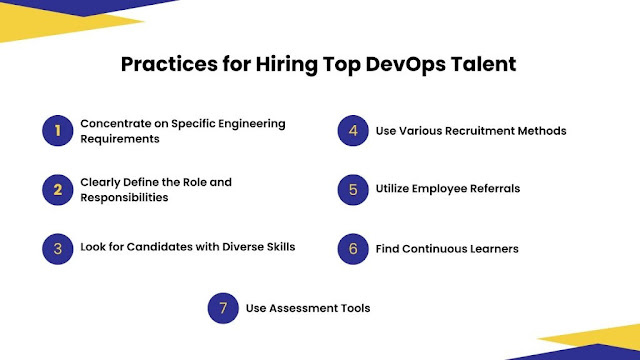
Cloud computing has revolutionized the way companies approach software development and delivery. With the ability to easily scale resources, improve collaboration, and reduce costs, cloud computing has become a key enabler for DevOps success. This blog will explore the impact of cloud computing on DevOps and how it is changing how organizations approach software development. We will explore the advantages of using cloud computing for DevOps, such as increased scalability, flexibility, and cost savings. We will also examine organizations’ challenges when implementing cloud computing for DevOps, such as security and compliance issues, integration with on-premises systems, and the need for skilled professionals. Furthermore, we will provide best practices and strategies for successfully incorporating cloud computing into a DevOps workflow. By the end of this blog, you will have a better understanding of the impact of cloud computing on DevOps and how to take advantage of this powerful technology to improve your organization’s software development and delivery process.
Definition of Cloud Computing
Cloud computing provides servers, storage, databases, networking, software, analytics, and intelligence over the internet (“the cloud”) to enable faster innovation, more flexible resources, and scalability. You typically pay only for the cloud services you use, lowering your operating costs, allowing you to run your infrastructure more efficiently, and allowing you to scale as your business needs change.
Cloud computing services are classified into three types: Infrastructure as a Service (IaaS), Platform as a Service (PaaS), and Software as a Service (SaaS) (SaaS).
◉ IaaS: Provides virtualized computing resources over the internet, including virtual machines, storage, and networking
◉ PaaS: Provides a platform for developing, deploying, and managing applications and services
◉ SaaS: Provides access to software applications over the internet, typically on a subscription basis
Cloud computing enables organizations to consume and pay for computing resources on an as-needed basis rather than having to build and maintain their infrastructure. This allows for increased flexibility, scalability, and cost savings, making it an attractive option for many organizations.
Definition of DevOps
DevOps is a set of practices and principles aiming to bring development and operations teams together to improve collaboration, communication, and software delivery. It is a cultural and technical movement that seeks to bridge the gap between software development and operations by automating processes, breaking down silos, and fostering a culture of shared ownership and continuous improvement. DevOps aims to increase efficiency, reduce time to market, and improve the overall quality of software products. This can be achieved through continuous integration, continuous delivery, and infrastructure as code. By implementing DevOps principles and practices, organizations can improve the speed and reliability of their software delivery while also increasing their teams’ overall agility and responsiveness.
How Cloud Computing and DevOps are Related?
Cloud computing and DevOps are related in several ways. Cloud computing provides the infrastructure and tools necessary for
organizations to implement DevOps practices, while DevOps provides the methodology and culture for organizations to utilize cloud computing effectively.
One of the main ways cloud computing and DevOps are related is through the concept of infrastructure as code. Cloud computing allows organizations to easily provision and manage their infrastructure through code rather than manually configuring servers and other resources. This allows for greater automation and scalability, which are key principles of DevOps. Additionally, cloud computing provides the flexibility and scalability necessary for organizations to implement continuous integration and continuous delivery (CI/CD) pipelines, which are central to DevOps.
Another way in which cloud computing and DevOps are related is through the use of cloud-native tools and services. For example, many cloud providers offer a wide range of services, such as container orchestration, serverless computing, and monitoring and logging, which can be used to implement DevOps practices. Additionally, many cloud providers offer pre-built solutions for CI/CD, testing, and monitoring, which can help organizations implement DevOps practices more easily.
Overall, Cloud computing and DevOps have related to providing the infrastructure and tools necessary for organizations to implement DevOps practices. At the same time, DevOps methodology and culture help organizations to utilize cloud computing effectively.
Benefits of Cloud Computing for DevOps
DevOps and the cloud are a perfect match. DevOps and cloud-based delivery models are excellent places to start when providing businesses with speed and agility. In addition, cloud computing offers several benefits for DevOps teams and organizations, including:
◉ Scalability: Cloud computing allows for easy scaling of resources, making it possible to handle sudden increases in traffic or workloads. DevOps teams can easily add or remove resources without significant capital investments
◉ Speed and Efficiency: Cloud computing allows for faster deployment of applications and faster testing and delivery of software updates. This is particularly useful for DevOps teams, as it allows for faster time-to-market for new products and features
◉ Cost Savings: Cloud computing allows for more efficient use of resources, which can result in significant cost savings for DevOps teams. This is because resources can be used only when needed and can be scaled up or down as necessary
◉ Increased Collaboration: Cloud computing allows remote and distributed teams to collaborate more easily. DevOps teams can access and share resources and work on projects, regardless of their physical location
◉ Improved Security: Cloud computing providers typically have advanced security measures to protect their customers’ data. This can provide an added layer of security for DevOps teams, helping to protect sensitive information and keep it out of the wrong hands
◉ Automation: Cloud computing allows for the automation of various tasks, such as provisioning and scaling, which can help DevOps teams to work more efficiently. This can reduce the need for manual intervention and minimize the risk of human error
◉ Flexibility: Cloud computing allows for a high degree of flexibility in terms of the resources and services that can be used. DevOps teams can choose from a wide range of options, including Infrastructure as a Service (IaaS), Platform as a Service (PaaS), and Software as a Service (SaaS), to meet their specific needs
Challenges of Implementing Cloud Computing for DevOps
DevOps is a software development methodology that combines software development and IT operations to optimize the software development process. Cloud computing is a technology that permits users to access and manage data, software, and other services over the internet. Combining these two technologies can benefit businesses as it allows them to leverage the benefits of cloud computing while improving their software development process. However, implementing DevOps in the cloud can also present some challenges, which include:
Challenge 1: Hire or Train Cloud Professionals
One of the main challenges in implementing cloud computing for DevOps is acquiring the necessary expertise. This can be done through a few different options, such as hiring consultants, bringing on cloud experts to join the DevOps team, or training existing team members. These approaches can also be combined; for example, a team might hire a consultant to help transition to the cloud, hire a cloud architect to manage the cloud environment, and provide training for IT operations team members to administer the cloud.
Challenge 2: Adapt to the environment of IaaS
DevOps teams must navigate the complexities of IaaS in the cloud, including configuring AWS Availability Zones for global availability and disaster recovery and adapting to different load balancing techniques. Using tools like NetApp’s Cloud Volumes ONTAP can assist with automating virtual storage environments and addressing issues related to protocol awareness, Kubernetes support, and APIs. Additionally, it’s important to understand the service level agreements offered by providers like AWS, as they may differ from those typically negotiated with corporate IT.
Challenge 3: High-Performance Storage
High-performance storage is critical for cloud DevOps, particularly SQL database services. DevOps teams must manage high-performance/low-latency cloud storage and control the cost of running workloads on expensive storage tiers. DevOps teams may need tools or services that help with storage optimization, such as NetApp’s Cloud Volumes ONTAP.
Challenge 4: Run Continuous Cloud Tests
Automatic and rapid provisioning is essential for successful continuous testing. This is made possible by quickly creating cost-effective data clones for various tests, including development, continuous integration, quality assurance, staging, and production. Once the test is completed, the same automation tools can quickly deprovision the clones. However, cloning functionality is not a built-in feature offered by cloud providers like AWS. NetApp’s FlexClone® is specifically designed for high-speed and efficient volume cloning.
Challenge 5: Align DevOps Practices with Cloud Storage Realities
High-performance storage in cloud environments for DevOps is vital, as it is necessary to provide adequate performance and capacity for various SQL database services. Additionally, managing high-performance, low-latency cloud storage and controlling costs for running workloads on more expensive storage tiers can be challenging. Even with the help of cloud specialists, it cannot be easy to keep up with the level of manual management required. To address these challenges, tools like Cloud Volumes ONTAP can be utilized, which include storage efficiency features such as deduplication, compression, and data tiering to less expensive object storage, as well as the ability to manage persistent storage allocation for containers. In addition, cloud Volumes Service offers dynamic service levels to support cost-effective performance and scalability.
Challenge 6: Security and Compliance
Security and compliance are critical concerns for any organization, but they can be particularly challenging in the cloud. DevOps teams must ensure that their cloud infrastructure and applications meet the organization’s security and compliance requirements. DevOps teams may need tools or services that help with security and compliance, such as NetApp.
Challenge 7: Increase the Efficiency of Cloud Storage
DevOps can streamline the management of large CI/CD pipelines using cloud storage applications. However, while AWS provides several tools to assist its users, such as AWS AppSync for integrating data from multiple sources, it may only sometimes include built-in data protection and backup options for its services. For instance, to back up Amazon Elastic File System (EFS), it is necessary to subscribe to additional AWS services.
Challenge 8: Low TCO, High ROI
Technology and culture both help to reduce costs and increase returns. For example, establishing a lean cost culture through governance, adapting user behavior, and adopting software tools to optimize CI/CD pipelines is a fundamental cultural change for DevOps. Technology also helps to reduce TCO (Total Cost of Ownership) and increase ROI. DevOps teams transitioning to the cloud must invest in training, configuration, and optimization. When the infrastructure is operational, monitoring and automated software manage computing and storage at a low cost.
Best Practices for Implementing Cloud Computing for DevOps
Implementing cloud computing for DevOps can be a complex process, but there are certain best practices that organizations can follow to ensure a smooth transition and successful implementation.
◉ Start with a clear strategy: Before moving to the cloud, it is important to have a clear strategy that outlines the organization’s goals and objectives and how cloud computing can help achieve them. This includes identifying the right cloud provider, determining which workloads to move, and establishing a timeline for the migration
◉ Prioritize security: Cloud computing is a highly secure environment, but it’s important to ensure that the right security measures are in place to protect sensitive data. This includes encrypting data at rest and in transit, implementing identity and access management, and monitoring potential threats
◉ Automate as much as possible: Automation is key to successful cloud computing for DevOps. Automating resource provisioning, scaling, and managing resources can reduce costs and improve efficiency
◉ Monitor and measure performance: It’s important to monitor and measure the performance of cloud-based systems to ensure that they meet the organization’s requirements. This includes monitoring resource usage, response times, and error rates
◉ Use a hybrid approach: Many organizations find that a hybrid approach works best when some workloads are run on-premises while others are run in the cloud. This allows organizations to take advantage of the benefits of cloud computing while still maintaining control over certain aspects of their IT environment
◉ Continuously improve: Cloud computing is continuously evolving, and it’s important to stay up-to-date with the latest best practices and technologies. Continuously improving and updating processes and tools can help organizations stay ahead of the competition
◉ Use a tool for Cloud Management: There are several cloud management tools available in the market, like AWS, Azure, GCP, etc. These tools provide a centralized management console, automatic scaling, and monitoring.
◉ Familiarize with Cloud Services: Understand the different types of cloud services and how they can support different applications and workloads. This includes services like IaaS, PaaS, and SaaS
◉ Plan for Disaster Recovery: Cloud providers offer disaster recovery solutions, but evaluating their capabilities is important as ensuring they meet your organization’s needs
◉ Establish clear communication: Establish clear communication between development and operations teams to ensure that everyone is on the same page and that there is a shared understanding of the goals and objectives of the organization
Future of Cloud Computing and DevOps
The future of cloud computing and DevOps is closely tied to the continued advancement of technology and the increasing adoption of cloud-native practices. As more organizations move their infrastructure and applications to the cloud, the demand for skilled DevOps professionals who can manage and optimize cloud environments will continue to grow.
One key trend in the future of cloud computing is the increasing use of containers and Kubernetes for application deployment. Containerization allows for more efficient and consistent application deployment across different environments, and Kubernetes provides a powerful platform for managing and scaling containerized applications. Another trend is the rise of serverless computing, which allows developers to build and run applications without managing the underlying infrastructure. This can lead to cost savings and increased scalability for organizations.
In addition, the continued development of AI and machine learning technologies will play a significant role in the future of cloud computing and DevOps. These technologies will enable organizations to automate many tasks and make more data-driven decisions, improving efficiency and productivity.
Overall, the future of cloud computing and DevOps will likely be characterized by a continued focus on automation, scalability, and the use of cutting-edge technologies to improve the development and deployment of applications.
Source: invensislearning.com














